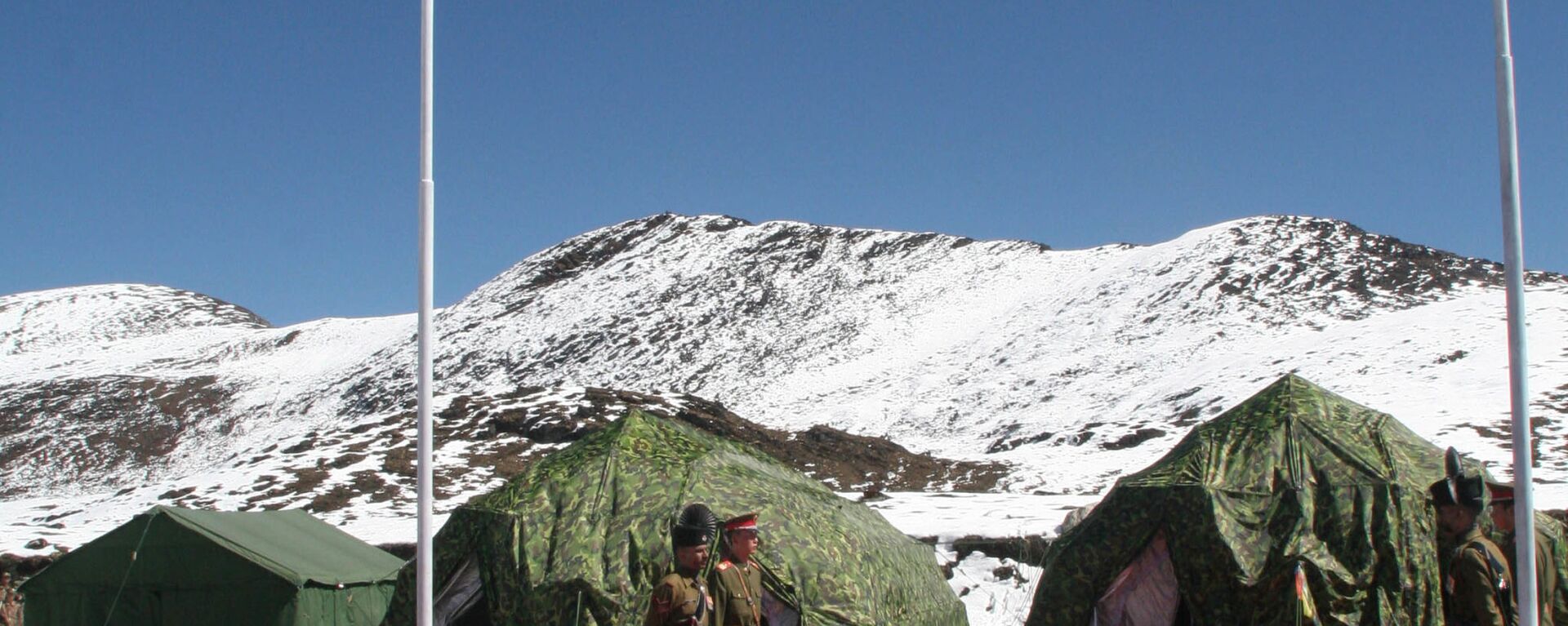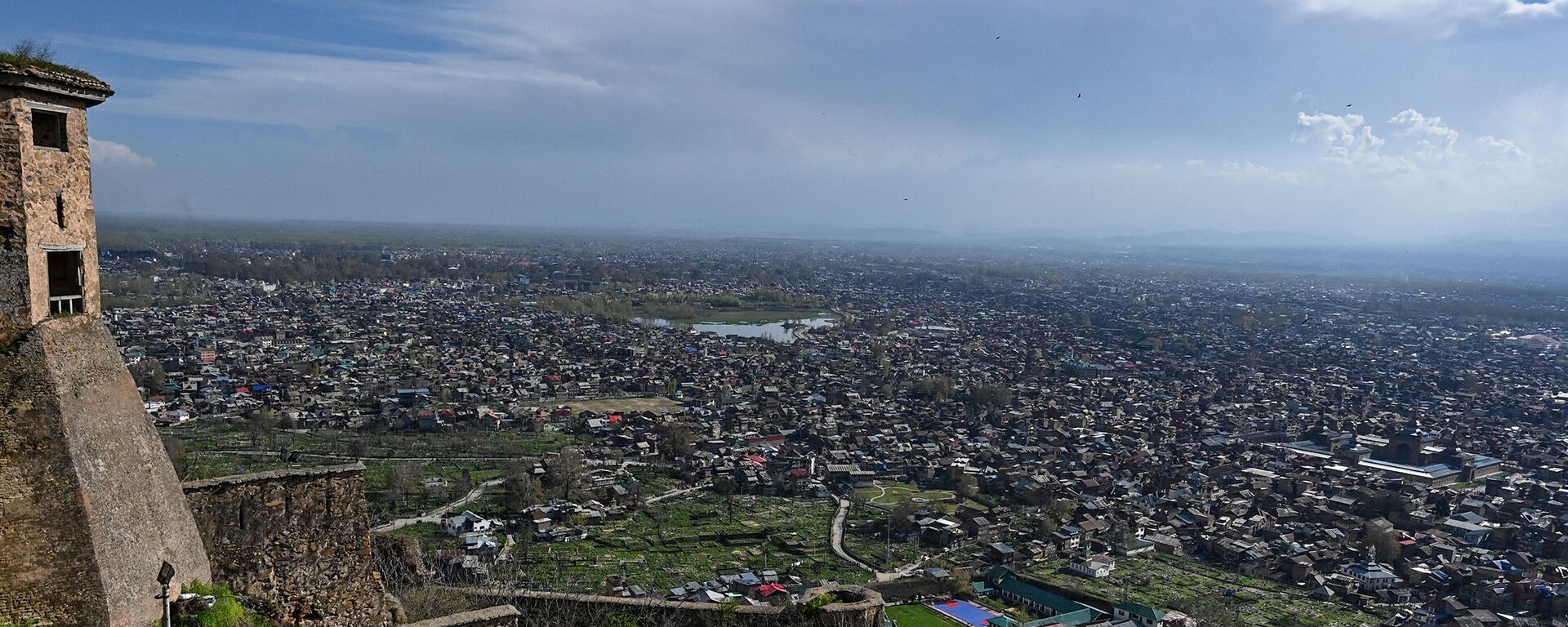https://sputnikglobe.com/20211208/india-could-be-attacked-from-all-fronts-china-poses-a-significant-challenge-iaf-chief-warns-1091344302.html
India 'Could Be Attacked From All Fronts', China Poses a 'Significant Challenge', IAF Chief Warns
India 'Could Be Attacked From All Fronts', China Poses a 'Significant Challenge', IAF Chief Warns
Sputnik International
China is reportedly building 10 new airbases along its border with India, as the standoff between the two nations lingers on. In what was construed as a... 08.12.2021, Sputnik International
2021-12-08T10:56+0000
2021-12-08T10:56+0000
2022-07-19T10:40+0000
indian air force (iaf)
pla
ladakh standoff
china
https://cdn1.img.sputnikglobe.com/img/07e4/0a/13/1080814130_0:187:2001:1312_1920x0_80_0_0_fc6e2c032b89b4d91b531ebe016b4ad6.jpg
Indian Air Force (IAF) chief Vivek Ram Chaudhari said on Wednesday that the country “could be attacked from all fronts” in the future, as he listed a range of offensive measures ranging from economic strangulation to diplomatic isolation in the event of a potential crisis.Air Chief Marshal V.R. Chaudhari further said that the enemy could also carry out cyber-attacks, which could result in “information blackouts” and “distributed denial of services” to obstruct the functioning of defence and other systems.The remarks by India’s top Air Force official were made at the 18th Subroto Mukerjee Seminar, organised by New Delhi-based think tank Centre for Air Power Studies (CAPS). He was delivering the keynote address at the conference, themed on ‘India’s National Security Dynamics’.Chaudhari, during his speech, underlined that both Pakistan and China have been significantly upgrading their air defence capabilities and modernising the equipment of their respective air force departments — Pakistan Air Force (PAF) and the People’s Liberation Army Air Force (PLAAF).Chaudhari cautioned that China’s “growing imprint” globally as well as regionally will increase competition between itself and New Delhi. He also warned that Beijing would attempt to keep India “engaged on issues relating to the unsettled borders”.The observations on China come amid a military standoff between the Indian Army and the PLA in the eastern Ladakh region. The more-than-a-year-long standoff, the deadliest in over four decades, remains unresolved despite 13 rounds of military-commander level talks and several rounds of official discussions, including face-to-face meetings between the Indian and Chinese Foreign Ministers Subrahmanyam Jaishankar and Wang Yi respectively.Over 50,000 troops from both sides are reportedly stationed in the eastern Ladakh region, one of the biggest military build-ups in the region in recent years.Switching his focus to Pakistan, the IAF chief said that the western neighbour was “unlikely to shed its Kashmir-oriented strategy”.Chaudhari noted that there was a change in Pakistan’s war strategy and the Pakistani forces were now changing to a more “aggressive approach of offensive defence under the nuclear umbrella''.Amid the heightened threat perception from both flanks, the Indian Air Chief said that even India was making a transition from “fighting a predominantly defensive war to adopting a more aggressive approach for an offensive defence under the nuclear umbrella”.
https://sputnikglobe.com/20210628/india-redirects-50000-troops-to-chinese-border-inaugurates-new-infrastructure-projects-in-ladakh-1083256057.html
https://sputnikglobe.com/20210805/historic-day-modi-hails-his-kashmir-move-as-imran-slams-india-for-destroying-regional-stability-1083533243.html
ladakh standoff
china
Sputnik International
feedback@sputniknews.com
+74956456601
MIA „Rossiya Segodnya“
2021
News
en_EN
Sputnik International
feedback@sputniknews.com
+74956456601
MIA „Rossiya Segodnya“
Sputnik International
feedback@sputniknews.com
+74956456601
MIA „Rossiya Segodnya“
indian air force (iaf), pla, ladakh standoff, china
indian air force (iaf), pla, ladakh standoff, china
India 'Could Be Attacked From All Fronts', China Poses a 'Significant Challenge', IAF Chief Warns
10:56 GMT 08.12.2021 (Updated: 10:40 GMT 19.07.2022) China is reportedly building 10 new airbases along its border with India, as the standoff between the two nations lingers on. In what was construed as a warning to Delhi, the Chinese state media last month aired footage of its H-6K bombers flying near the Himalayas, several weeks after the 13th military commander-level talks ended in a stalemate.
Indian Air Force (IAF) chief Vivek Ram Chaudhari said on Wednesday that the country “could be attacked from all fronts” in the future, as he listed a range of offensive measures ranging from economic strangulation to diplomatic isolation in the event of a potential crisis.
Air Chief Marshal V.R. Chaudhari further said that the enemy could also carry out cyber-attacks, which could result in “information blackouts” and “distributed denial of services” to obstruct the functioning of defence and other systems.
The remarks by India’s top Air Force official were made at the 18th Subroto Mukerjee Seminar, organised by New Delhi-based think tank Centre for Air Power Studies (CAPS). He was delivering the keynote address at the conference, themed on ‘India’s National Security Dynamics’.
Chaudhari, during his speech, underlined that both Pakistan and
China have been significantly upgrading their air defence capabilities and modernising the equipment of their respective air force departments — Pakistan Air Force (PAF) and the People’s Liberation Army Air Force (PLAAF).
''In my assessment, China poses a more significant and long-term challenge to the realisation of India's strategic goals,'' he remarked, pointing out that the threat perception to India was greater from its eastern neighbour than from Islamabad in the west.
Chaudhari cautioned that China’s “growing imprint” globally as well as regionally will increase competition between itself and New Delhi. He also warned that Beijing would attempt to keep India “engaged on issues relating to the unsettled borders”.
''Its (China’s) aggressive intent is visible in the rapid enhancement of the PLA Air Force's operational infrastructure in terms of aircraft and additional airfields in the Tibet Autonomous Region,'' noted the IAF chief.
The observations on China come amid a military standoff between the Indian Army and the PLA in the eastern Ladakh region. The more-than-a-year-long standoff, the deadliest in over four decades, remains unresolved despite 13 rounds of
military-commander level talks and several rounds of official discussions, including face-to-face meetings between the Indian and Chinese Foreign Ministers Subrahmanyam Jaishankar and Wang Yi respectively.
Over 50,000 troops from both sides are reportedly stationed in the eastern Ladakh region, one of the biggest military build-ups in the region in recent years.
Switching his focus to Pakistan, the IAF chief said that the western neighbour was “unlikely to shed its Kashmir-oriented strategy”.
“It will continue to sponsor terrorism,” he said, reiterating New Delhi’s longstanding complaint against Islamabad about it being behind training of terrorists and radical Islamist groups which target India. Pakistan denies these claims.
Chaudhari noted that there was a change in Pakistan’s war strategy and the Pakistani forces were now changing to a more “aggressive approach of offensive defence under the nuclear umbrella''.
Amid the heightened threat perception from both flanks, the Indian Air Chief said that even India was making a transition from “fighting a predominantly defensive war to adopting a more aggressive approach for an offensive defence under the nuclear umbrella”.
"We must reassess our strategic priorities and realign actions to ensure that we don't get left behind. Our security scenario is influenced by unstable neighbours with unsettled borders, which could be a flashpoint in the future," he added during the lecture.



